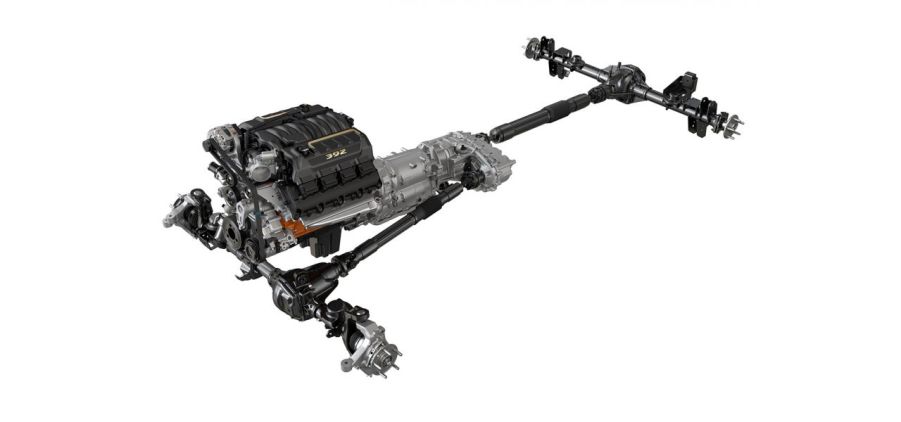
What Does a Transfer Case Do on a Truck or SUV?
When you head to a dealership and look at 4x4s, the salesperson will invariably tell you about the benefits of the transfer case. And for many of us, it’s a mind-numbing conversation. But if you need four-wheel drive, without a transfer case, you don’t get it. so, why is transfer case so important?
What does the transfer case do?

The transfer case is what makes a 4×4 a 4×4. It splits the power from your engine to the front and rear axles evenly. In your SUV, like a Jeep Wrangler or a Ford Bronco, and most 4×4 pickups, the power goes to the rear wheels. Then, when you engage the transfer case, via a lever or a button, the case activates and gears or a chain will engage the front axle, too. It’s a clever system that allows power to go to every wheel.
The transfer case is key to turning a two-wheel drive into a four-wheel drive. Transfer cases also offer two speeds. That means that you get an extra, really low, gear. The low gear allows you to climb a steep hill, or pull a heavy load, with ease.
All-wheel drive is not four-wheel drive

The basic difference between an AWD SUV or truck and a real 4×4 is the transfer case. Most SUVs, like those from Subaru, Hyundai, Audi, Honda and others offer AWD. But, those systems are designed more for inclement weather, some muddy situations, and gravel roads. Instead of a transfer case, these systems use a coupling that connects the axles. When a computer senses slipping, or when the coupling’s clutch pack tightens, the power is sent to both axles.
Of course there are exceptions. Jeep’s Quadra-Trac, for example, allows you to run in two-wheel drive, part-time four wheel drive, or full four-wheel drive. It can also lock the differential so you get maximum power spread around. GM also offers a similar case in some SUVs. Toyota simply uses an electric motor in the back of the RAV4 and Highlander hybrids to power the rear wheels, and the rear axle is not connected to the motor.
What happens when a transfer case goes out?
I can tell you from personal experience what happens when a transfer case blows on a Land Rover. When I was driving on the freeway, in 2wd mode, there was loud boom under the SUV, I lost all power, and coasted to the side. The fix was covered under warranty, but it took several weeks to get the parts. I was lucky it didn’t happen while I was in the woods.
The transfer case comes in two flavors, one that’s mated to the engine and one that’s not. If you blow it up, either by pulling too heavy a load, running in 4wd for too long, or if a gear or chain breaks, prepare to be towed home. One trick that’s said to keep it in working order is to use it, or at least shift into 4wd high and low a few times a year to make sure the mechanism is working properly and to keep oil circulating.
How much does it cost to replace a transfer case?

The transfer case is key to your SUV or truck going off road (and often even on the street), so if one goes out, you’ll need to replace it. According to Repair Pal, the average cost of a transfer case if about $2,300. Labor, though, can cost $479 to $604, depending on the vehicle. So, if your case goes out, you’re looking at a steep bill.
Don’t ignore funny noises from the transfer case (or really, any unusual noise) in your truck or SUV or it could lead to a costly repair.


